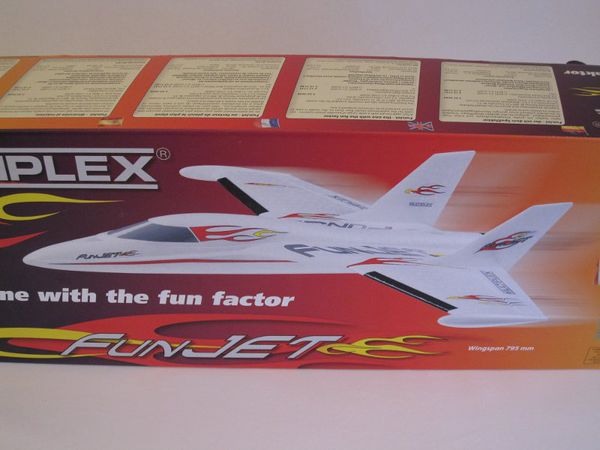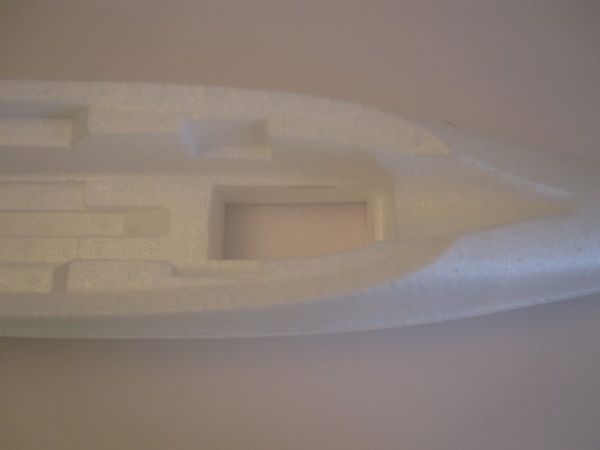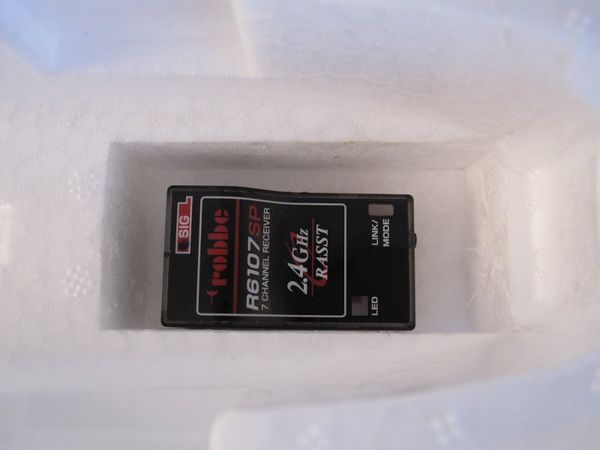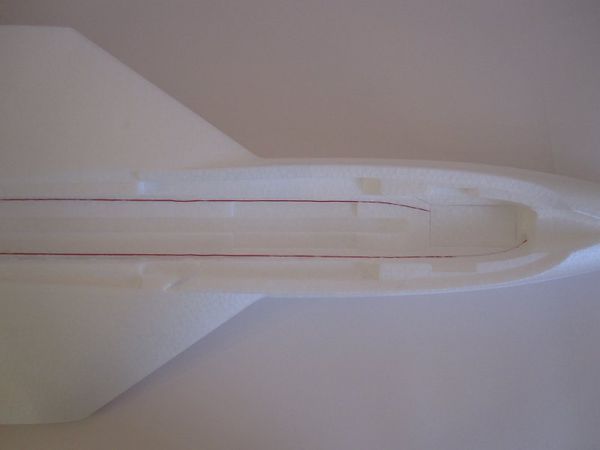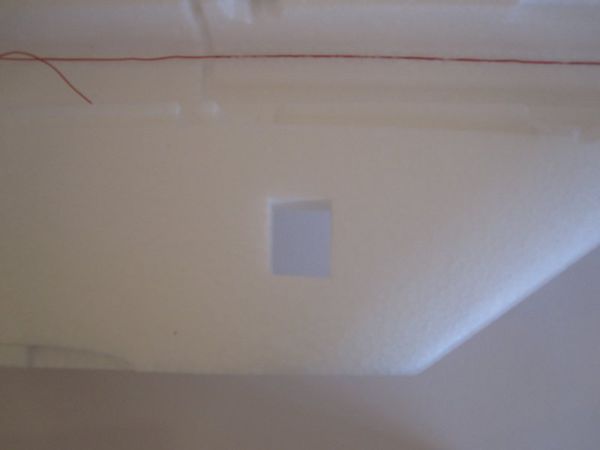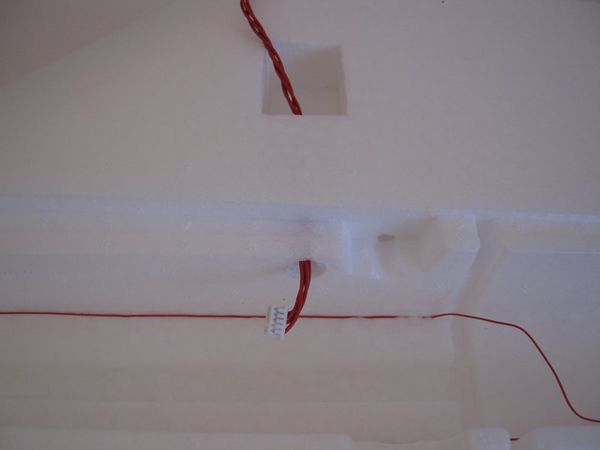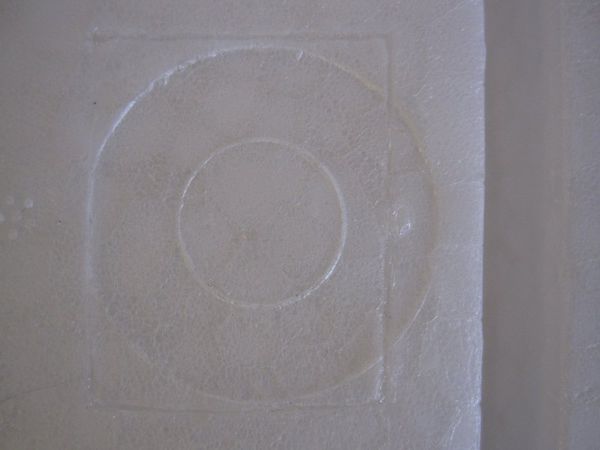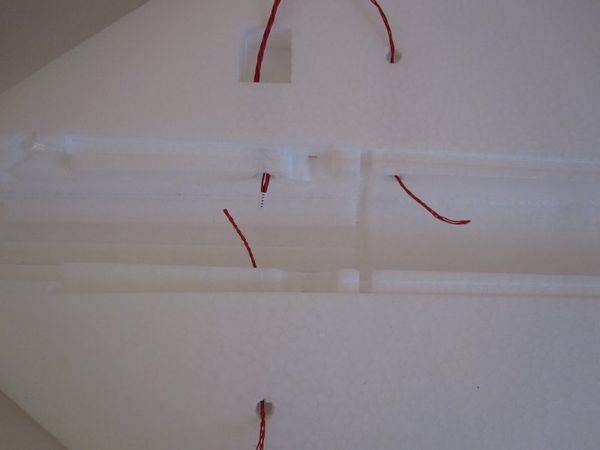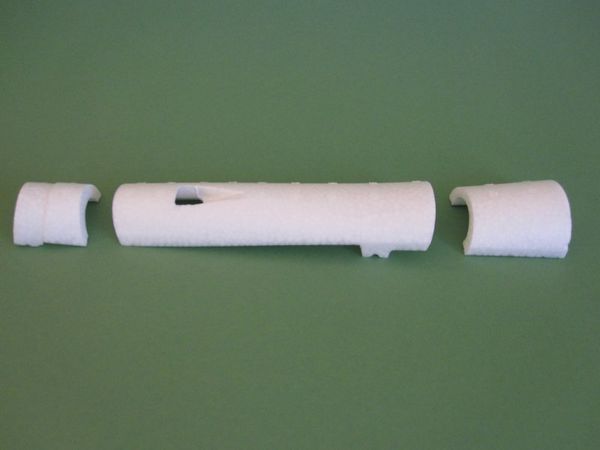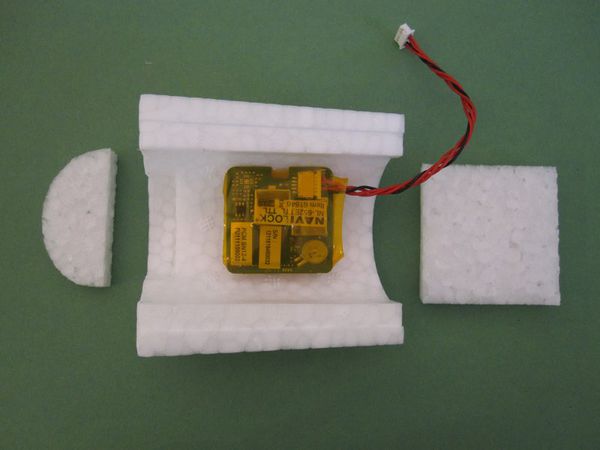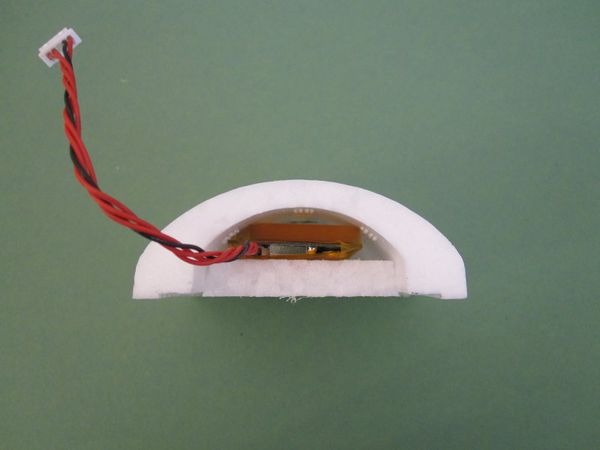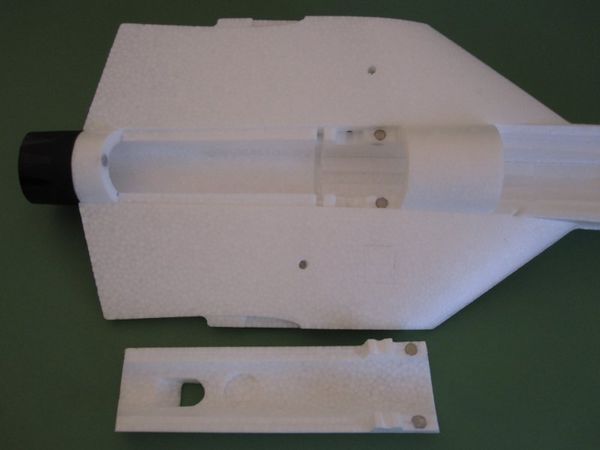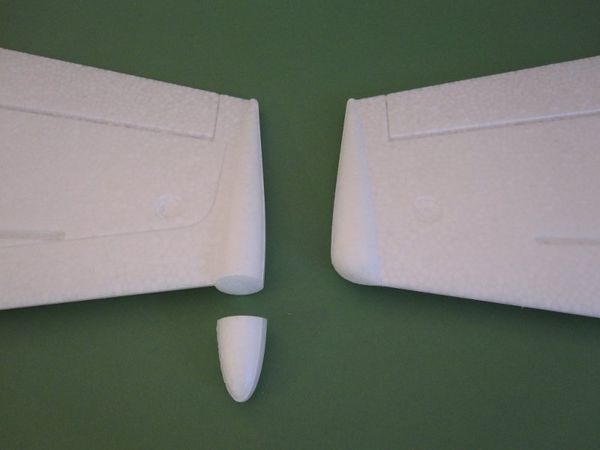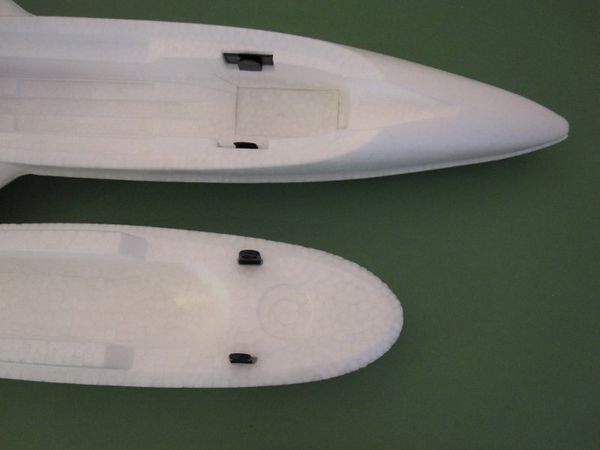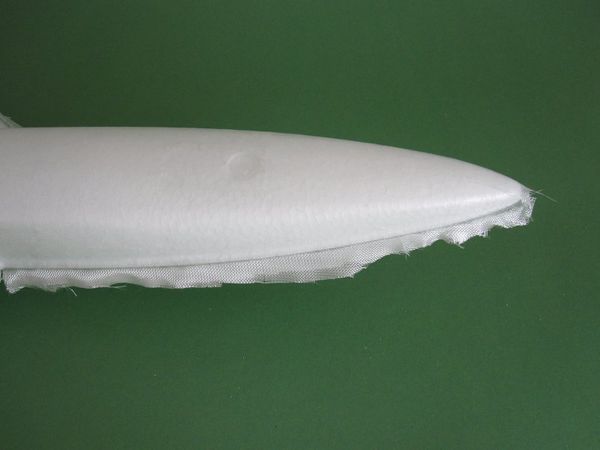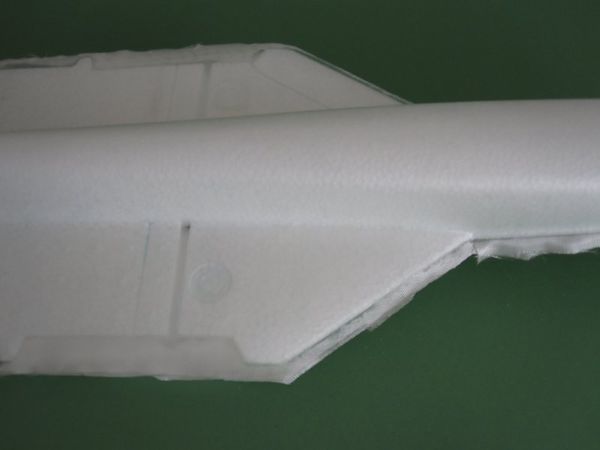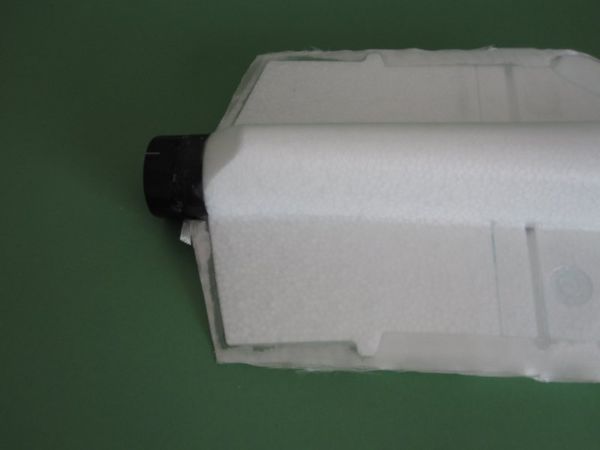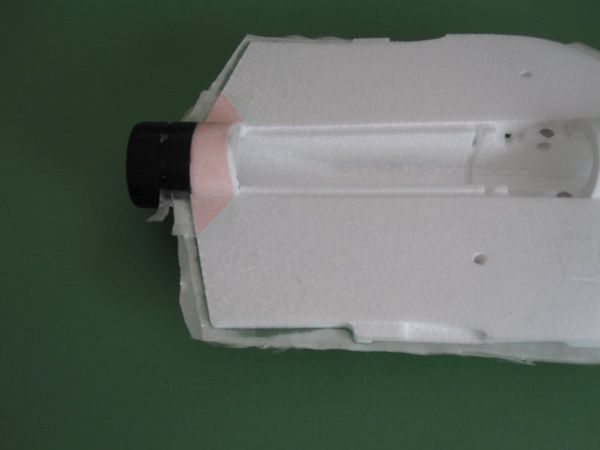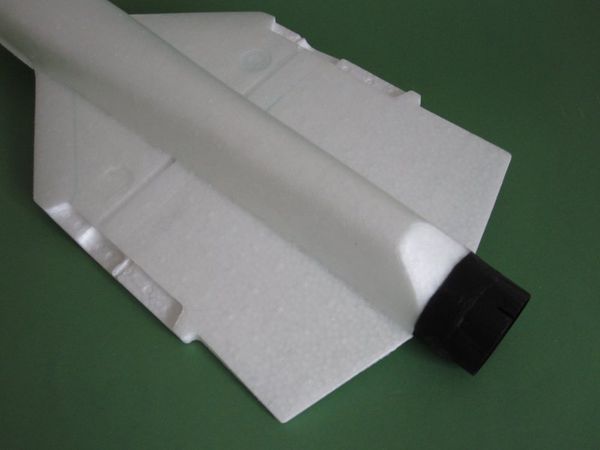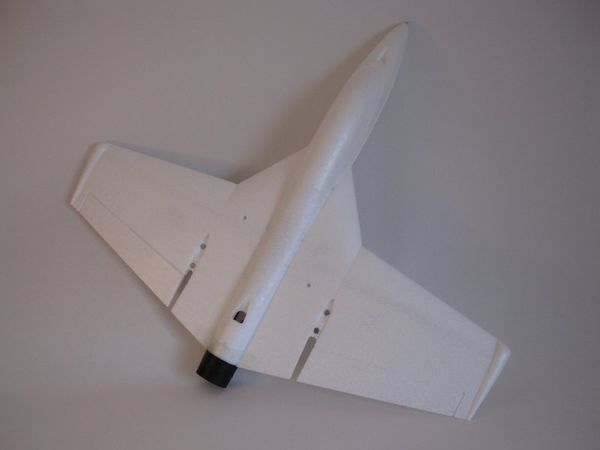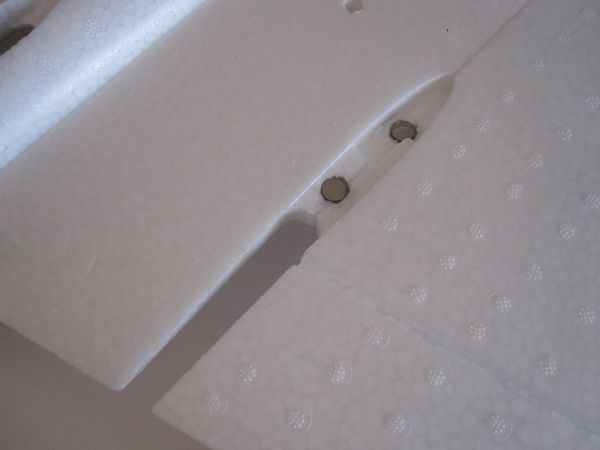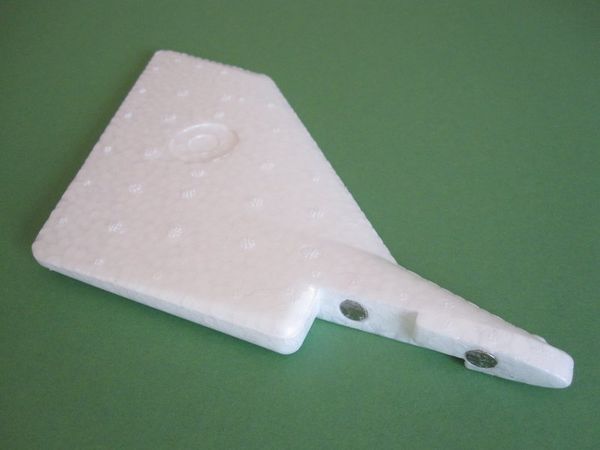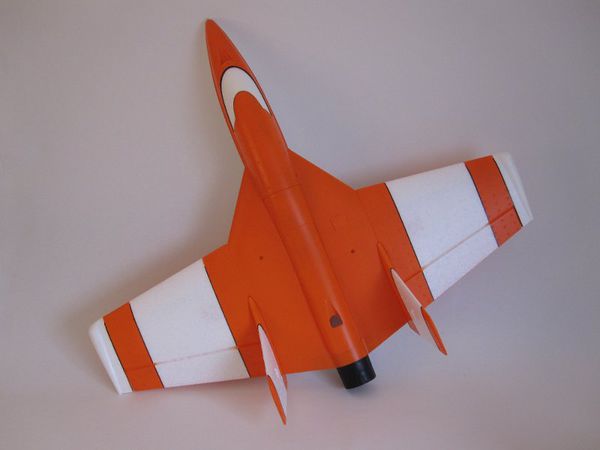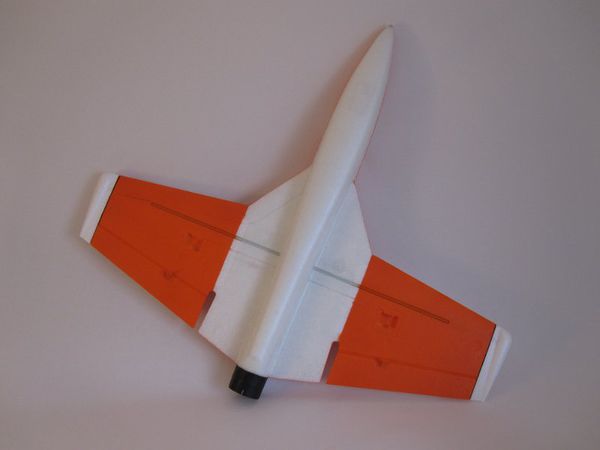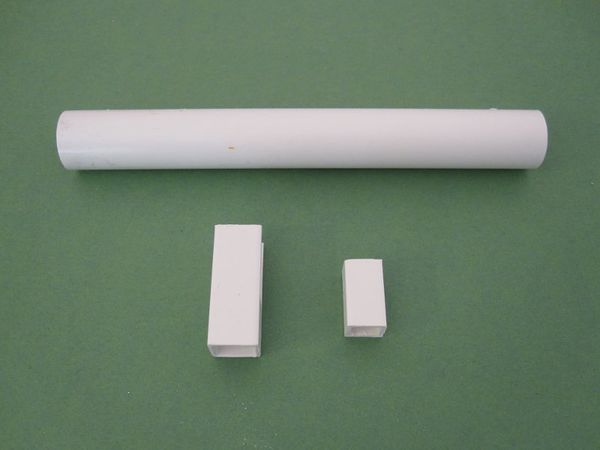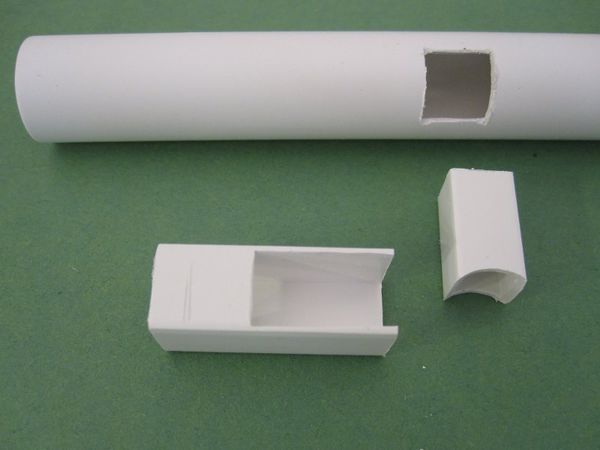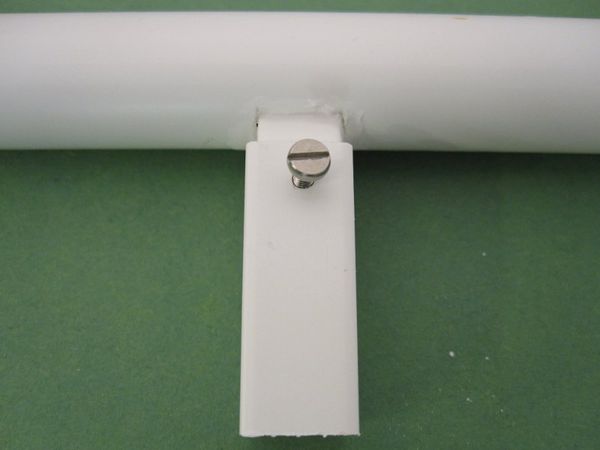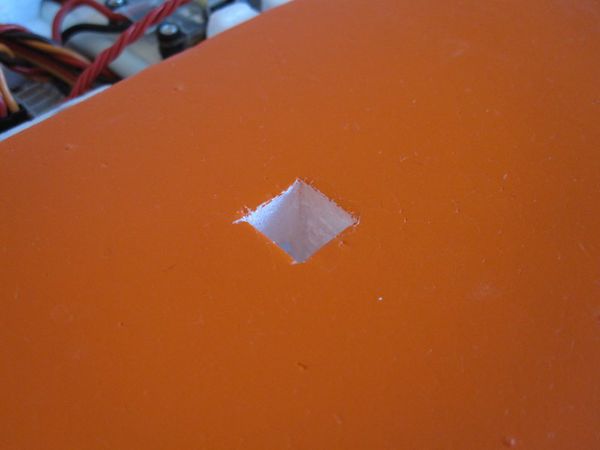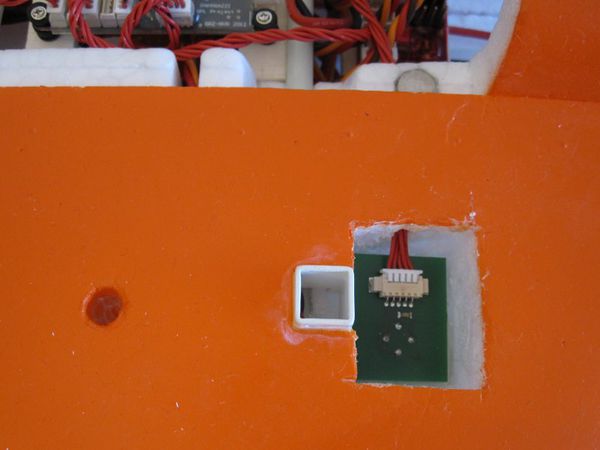SUMO/mechanical assembly
Basically you follow the original instructions of the Multiplex Funjet. We will only mention differences. Read through the original instructions and make sure you understand them before you start. Do not use hot glue.
Cut a hole through the front part of the fuselage depending on the size of the receiver. For the robbe R6107SP from Mikrokopter that is 26mm x 56mm.
Cut off the lower 4mm of the block you just pulled out and glue it to the bottom of the hole.
Cut as much from the top of the block so that the receiver fits into the box. This part will be glued in when everything is done. Leave a hole for the binding button. Create cable channels for the RC receiver, antenna and optional LEDs from front to back by cutting a few mm into the foam.
Cut a 25mm x 20mm hole for the Melexis MLX90614 infrared thermometer into the right wing. It works the same way as the receiver block: leave some foam at top and bottom.
Drill a 8mm hole for the cable from the outside of the wing into the fuselage, starting with small drills and getting bigger.
Bottom view of the MLX90614 hole.
Use the same principle to create the Hygrosens TEMOD-I2C-R1 high speed temperature (right wing) and Sensirion SHT75 humidity/temperature (left wing) cable channels. First drill from the outside of the wing to the fuselage, then from top to the cable channel.
Cut the fuselage turtle deck (4) into three parts: 70mm front, middle, 50mm back. Cut them with a slight angle so that the middle part can be easily removed.
Add 5mm EPP foam parts to the front turtle deck so that your GPS receiver fits.
Glue the front and back turtle deck to the fuselage, add magnets for latching. Glue the motor mount in place.
Cut off and smoothen the wing tips (just as in Funjet Ultra).
Glue in the canopy lock just as in the instructions
All the holes and cut outs weaken the structure significantly. Add two layers of glass fiber (163g/m2, 80g/m2) to the bottom. The glass extends over the black plastic motor holder.
As the turtle deck can not take as much force add two layers over the back part and the motor holder (colored in light red)
Cut off the glass fiber edges. Be careful with the glass. Now that the glass is applied, enhance the original servo channels to 5mm with a drill or a hot piece of steel.
Glue the wings as described in the instructions.
Optionally use (strong) magnets to hold the fins for easier transport.
Add some colour.
The SHT75 humidity and PT1000 temperature sensor holder are made of white ABS parts. The tube is 12mm inner and 14mm outer diameter, the quadratic inner holder is 6mm/8mm and the outer is 8mm/10mm.
Cut the ABS parts as shown.
Glue inner holder and tube together, secure outer holder with screw.
Cut square 8mm holes on both sides of the wing, left for the SHT75 humidity sensor and right for the PT1000 temperature sensor. Glue the outer ABS holder with CA.
